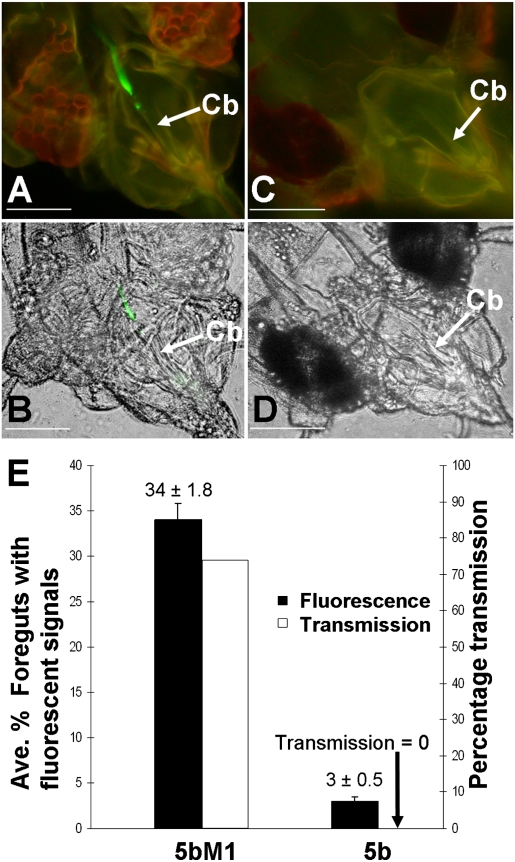Fig. 3.
Retention of virions of a CPm mutant LIYV (agro-pR6-5b) and a CPm-restored LIYV (agro-pR6-5bM1) in the anterior foregut or cibarium of the whitefly vector and the corresponding virus transmissibility. Whiteflies (B. tabaci biotype A) were sequentially fed the following components: (i) diet containing virions, (ii) diet containing anti-LIYV virion IgG, and (iii) diet containing a goat anti-rabbit IgG conjugated with Alexa Fluor 488. (A) Widefield fluorescence microscopy micrograph of the head of B. tabaci biotype A fed diet containing agro-pR6-5bM1 virions, with background transmitted light blocked. (B) Image in A with background transmitted light unblocked. (C and D) Same as A and B except that B. tabaci biotype A was fed diet containing agro-pR6-5b virions. The cibarium (Cb) is indicated. (Scale bars, 45 μm.) (E) The average percentage (error bars represent SEs) of whiteflies with their anterior foregut or cibarium labeled with fluorescent signals for agro-pR6-5bM1 (5bM1) virion- and agro-pR6-5b (5b) virion-fed whiteflies and the corresponding LIYV transmissibility after half the virion-fed whiteflies from each feeding cage (containing whiteflies that subsequently fed on components ii and iii) were transferred to a noninfected lettuce plant. Values were determined from three or four independent experiments.

